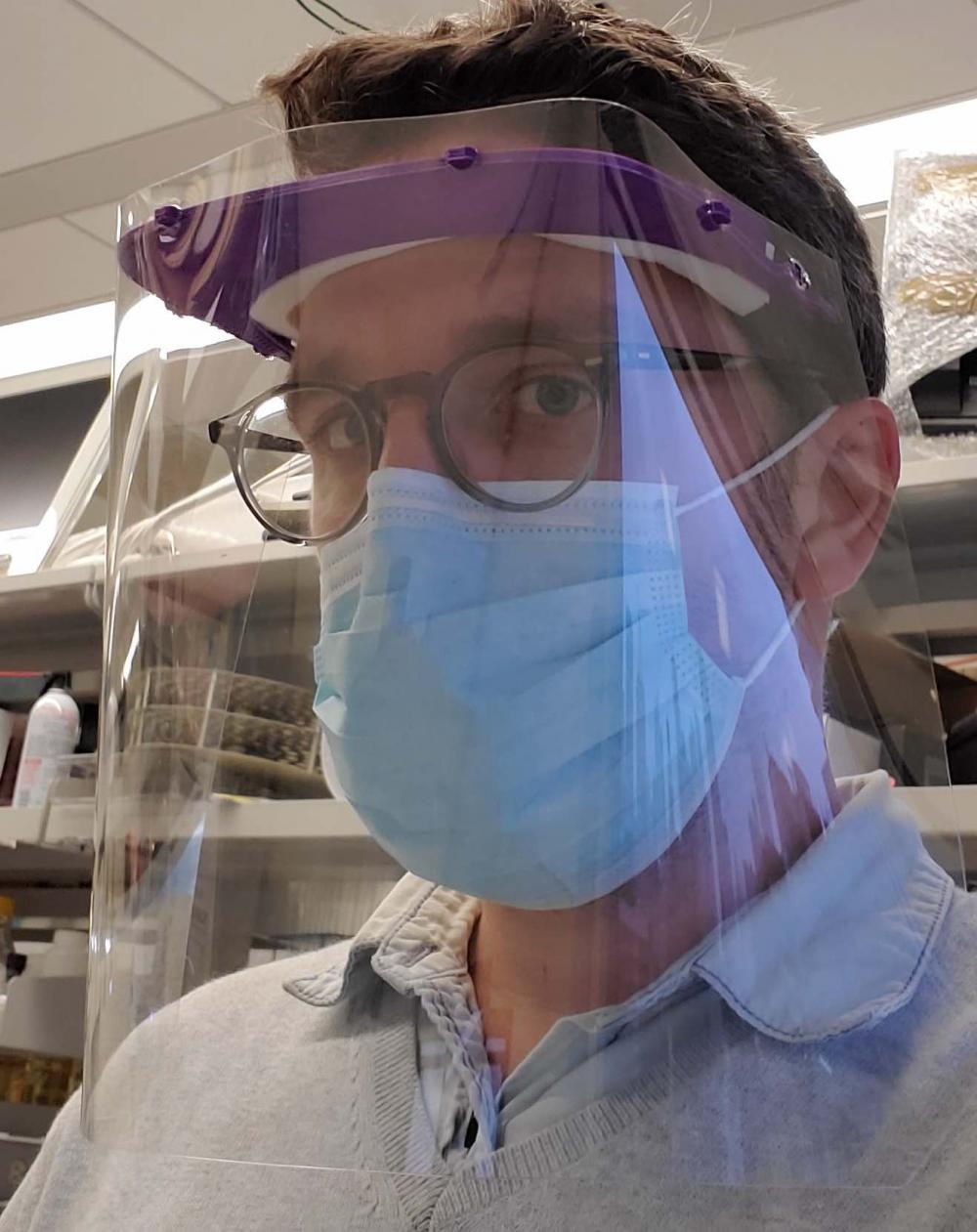
PHOTO: NYU LANGONE STAFF
In ordinary times, NYU Grossman School of Medicine students would be busy with their studies, while molecular biologist Timothee Lionnet, PhD, would be investigating gene expression in cancer. Now, in extraordinary times, they are both pitching in to manufacture custom protective gear for clinical staff on the frontlines of the COVID-19 crisis.
Among the items in short supply: face shields, the clear plastic guards that protect clinicians and other staff from droplet spray. With the shields in short supply nationwide, NYU Langone’s Emergency Management and Enterprise Resilience team searched for alternative solutions, and found one through a colleague at Johns Hopkins: a set of step-by-step instructions for self-manufacturing face shields. The instructions were relatively simple but sourcing enough materials in a nearly shut-down city proved much more challenging.
Through extraordinary resourcefulness, the team, led by Robert Shupe, the senior director of central sterile processing at NYU Langone, managed to stockpile enough plastic sheets, foam, elastic bands, glue guns, and staples to fashion 50,000 shields in the coming weeks.
VIDEO: A volunteer crew of NYU Grossman School of Medicine students uses an array of stockpiled materials to manufacture face shields—an invaluable piece of personal protective equipment (PPE) for clinicians during the COVID-19 crisis.
Finding helping hands for assembly turned out to be far easier. Linda R. Tewksbury, MD, the associate dean for student affairs, rallied a group of student volunteers. Just days after the idea hatched, a team of 10 began assembling face shields, completing 300 shields in their first day of work; they expect to produce 1,000 a day once they are fully up and running.
“It’s been a coordinated effort to meet this critical need on the fly,” says Alex Resnick, senior emergency management specialist. “The students have really stepped up, even reaching out to local supply stores for parts that haven’t yet arrived.”
Dr. Lionnet, meanwhile, has offered up another resourceful solution. After finding a computer blueprint for a 3D-printable visor-like frame on the internet, he made some tweaks to the design, and 3D printed a prototype in the lab of Jef D. Boeke, PhD, at the Institute for Systems Genetics. Next, he affixed a plastic shield to it and forwarded the custom shield to clinicians in the Ronald O. Perelman Department of Emergency Medicine for feedback.
“One of the tweaks was to make the visor extend farther back along the side of the face, so as to offer more lateral protection,” says Dr. Lionnet. “The shape of the frame provides spacing in front as well, so clinicians can still comfortably wear an N95 respirator underneath.”
Dr. Lionnet has received approval to start producing the visors, each of which takes about 45 minutes using the 3D printers at the Institute for Systems Genetics. With laser-cutting assistance from the NYU Tandon School of Engineering for the plastic sheets and assembly help from student volunteers, he expects to produce 100 of these high-grade shields daily.
“As a scientist, you work for the common good,” says Dr. Lionnet, an assistant professor in the Department of Cell Biology and a member of the Institute for Systems Genetics. “Right now, being helpful to people on the front lines is more important than our usual research.”


